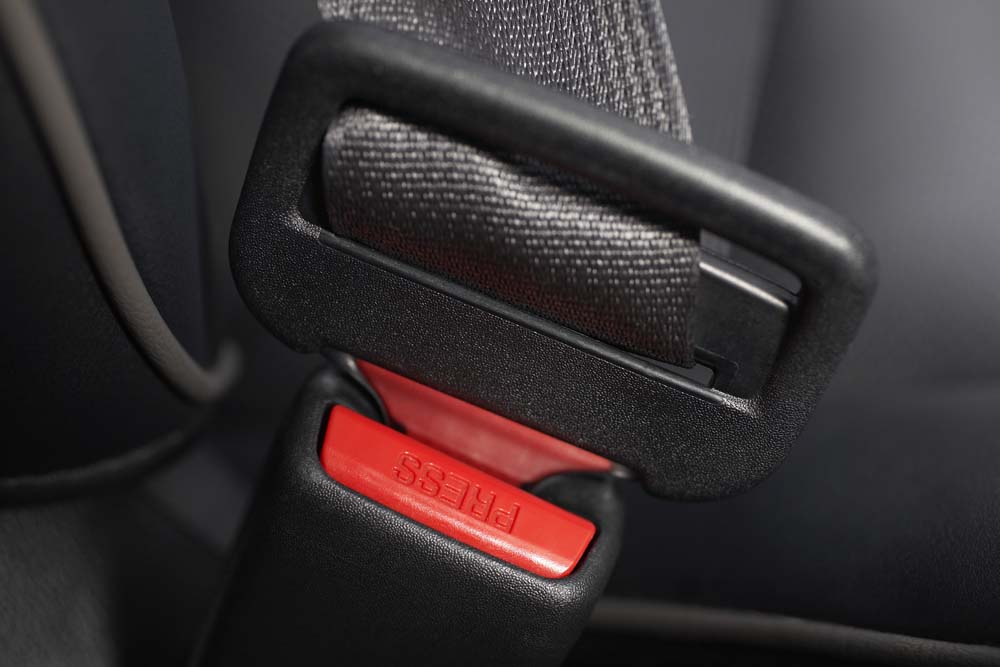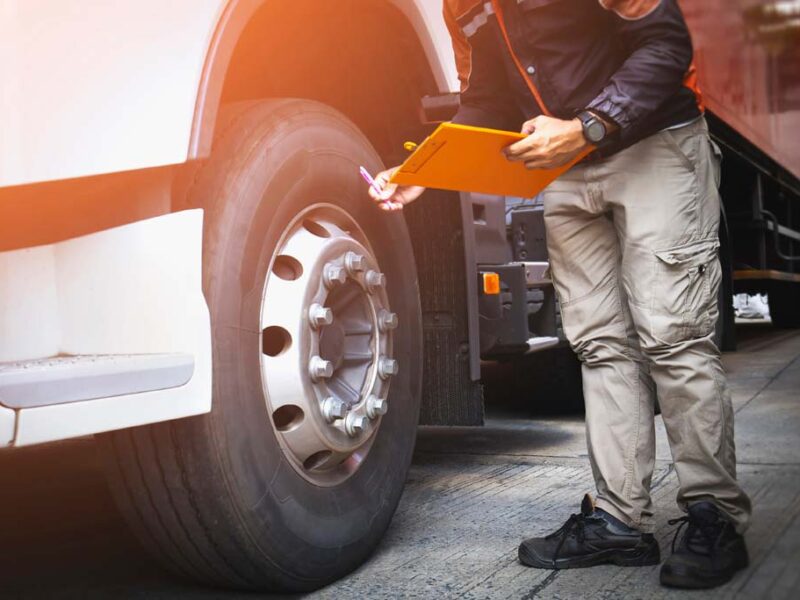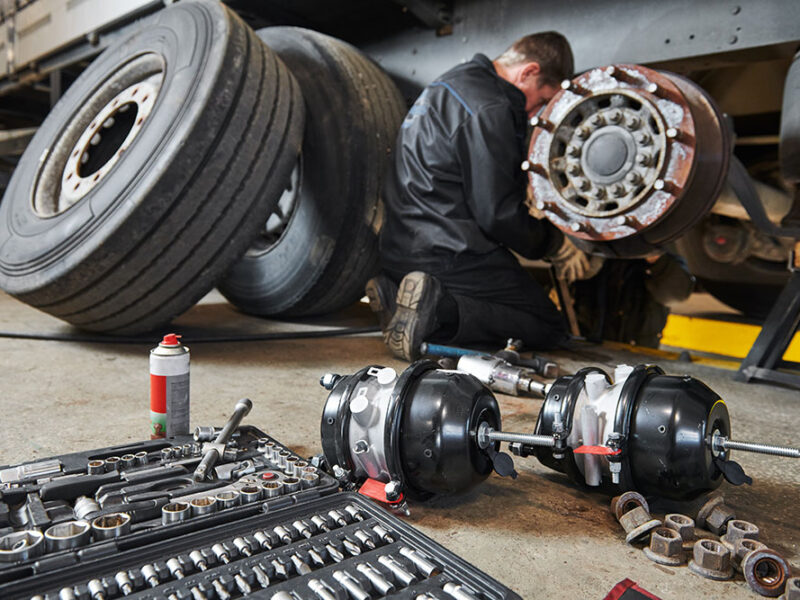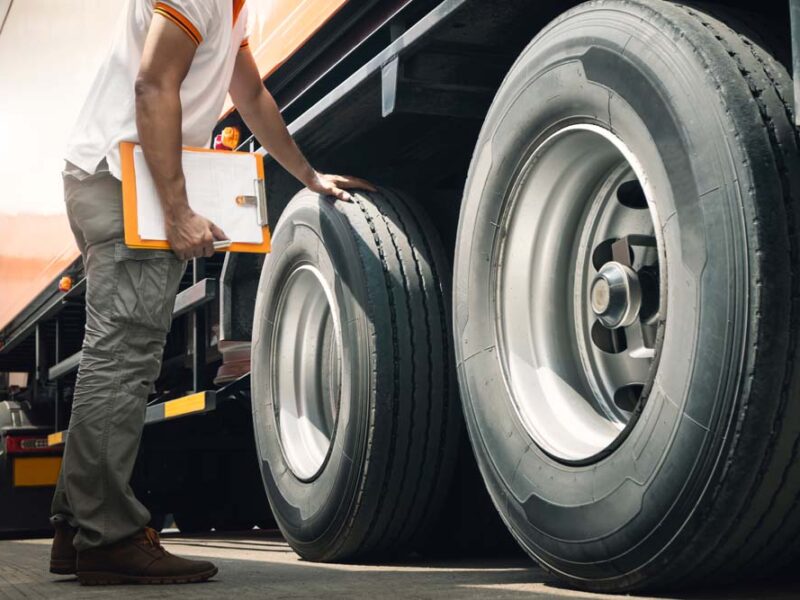The DVSA has recently updated its guidance on safe loading of vehicles - something which they believe should be of primary concern for all road users, whether it is using a seatbelt to secure passengers in a family car or transporting goods in lorries; "Not only does effective load securing prevent goods from falling onto roads causing danger to other road users, it also saves money by ensuring that goods arrive at their destination undamaged".
The guidance aims to complete the existing guidance provided by the Department for Transport (DfT) and the European Commission (EC) code of practice. In addition to this, the Office of the Traffic Commissioner expresses enthusiasm for the guidance as it "provides operations with the necessary instructions for ensuring their loads are safely transported".
In 2013, when the guidance was originally issued, the Highways Agency reported over 22,000 road impact incidents caused by objects quite literally falling off the back of lorries. Not only does this pose a significant risk to other road users it also causes major delays on the UK's road system, with each incident taking on average 20 minutes to clear up. The consequences of poor loading of a vehicle can be serious not only to the driver of the vehicle but also to other road users. Health and Safety Executive (HSE) statistics have show that workplace transport is one of the highest risk work activities in the UK.
The DVSA's advice has been updated in early 2023 with regard to:
- Section 7.9 - skips, and
- Section 7.11 - vehicle transporters, specifically with regard to:
- Cars and light vans up to 3,500kg transported on flatbed or curtain sided trailers
- Transporting vehicles over 3,500kg on flatbed trailers
- Heavy Goods Vehicles, and
- Plant equipment
Loaded or Partly-loaded Skips
The DVSA advice states that loaded or partly loaded skips should not be stacked on top of each other for transport, even if on a dedicated skip lorry. In their opinion the lower skip does not provide a stable base and there is a risk of the upper skip(s) moving under sudden braking or falling from the side of the vehicle if the driver must swerve to avoid another road user, for example. The advice also cautions against the use of the chain or beam connecting the hydraulic lifting arms on skip lorries to secure empty or laden skips. Such a use can put undue strain on the lifting arms leading to cracks and possibly "unexpected failure". However, they go on to state that there is an exception to this rule where the operator can demonstrate, through independent testing, that the connecting beam can secure up to two laden skips. These tests must have shown that the hydraulic rams pushing the connecting bar down onto the top skip provides sufficient pressure to secure the load.
In order for the DVSA to accept this practice the guidance refers to the following conditions being met:
- The lifting equipment is in good order and tested to LOLER (Lifting Operations and Lifting Equipment Regulations 1998);
- There is a connecting beam between the two lifting arms and it is in contact with the top skip at both sides;
- The bottom of the top skip is at least 100mm below the top of the bottom skip;
- Loose loads are sheeted or covered properly;
- If skips are carried in a line, then the loaded skips are only at the rear of the vehicle where the hydraulic lifting arms and beams secure the load;
- Evidence can be produced at the roadside that the vehicle has been tested at TRL (Transport Research Laboratory) or similar facility; and
- The chains used to lift the skips are attached for extra security.
Vehicle Transporters
These vehicles are used to move other vehicles around such as cars or plant equipment and fall into the following categories:
- Car transporters
- Flatbed vehicles
- Low loaders
The key advice for loading these vehicles is to ensure that the centre of gravity is kept as low as possible and that the vehicle that is loaded is secured safely with the correct type of fixing or lashing strap and in the instance of loading plant equipment which can be very heavy the use of chocks or lateral timbers is recommended in order to prevent movement. Another key piece of advice is always to load against the vehicle's headboard to aid stability and to check the headboards regularly for damage.
For a full breakdown on how to effectively secure all types of loads, for example, crushable loads, fragile loads, multi-drop collections and more, please visit the DVSA guidance page by clicking here.
Overall, if there is an accident or "near-miss" the DVSA will be looking for evidence that an operator has considered the load, the destination and the type of vehicle being used to carry it, so that an effective as possible safe-loading system is in place. They acknowledge that it is not a 'one-standard fits all'.
Operators should ensure that their drivers are fully aware of what they are meant to be doing each and every time they go out on the road and that this training and the appropriate safety checks are made and documented and kept up to date.
If you have any questions regarding safe loading procedures or any other part of your transport operation, then please click here to send an email or call 01279 818280 to speak to one of our lawyers. We are here to help.

More News and Insight

The Senior Traffic Commissioner’s Statutory Guidance
The value of The Statutory Guidance Documents and the importance to operators, nominated transport managers and other professionals involved in the operation and driving of large commercial vehicles cannot be overstated…

Walkaround Checks – Where Road Safety Starts
Every day, often before the sun is above the horizon, hundreds of thousands of commercial vehicles are started up by their drivers and then they head out on to the UK’s road network to transport goods or passengers from one point to another, often with demanding time constraints thrown into the mix…

Traffic Commissioner’s Annual Report 2024/25: “Don’t Look Back in Anger”
Time has flown by and once again we find that the schools are back after the long summer break and the Office of the Traffic Commissioner has issued its annual report to the Secretary of State, providing a review of the year…

An Apple a Day to Keep the DVLA Away – A review of the DVLA’s Rules on Health Checks for Professional Drivers
There has been some discussion in the industry trade press recently that has highlighted proposed changes to how the disease of diabetes is monitored in professional drivers by the DVLA. One article in RouteOne Magazine stated that…

Light Goods – Heavyweight Industry: The DVSA’s New LGV Strategy
While relatively small in overall physical size light goods vehicles (LGVs) are now a large part of the UK road transport industry. There are currently estimated to be over 5.1 million light goods vehicles on UK roads today…

Employment Law Update – A tale like Scylla & Charybdis
Operators currently face their own real time nightmare in the form of a modern day version of the Greek mythological tale of Scylla and Charybdis (where sailors faced a narrow strait through which they had to pass which had a monster on one side and a whirlpool on the other!)…

Labour Government – Employment Rights Bill – What Will It Mean for Transport Businesses?
In October 2024 the Deputy Prime Minister, Angela Rayner set out her intention to reform the employment rights held by employees in the UK. In a press release issued at the time she is quoted a saying…

Revisiting the DVSA’s Guide to Maintaining Roadworthiness
In April 2025 the Driver & Vehicle Standards Agency (DVSA) issued the latest edition of its Guide to Maintaining Roadworthiness.

The Wheels on the Bus go Round & Round….but how do they Stop?
At the tail end of 2024 a Public Inquiry was held in front of Traffic Commissioner Kevin Rooney where the subject of brake maintenance practices was called into question…

Maintenance Provision Rating Scheme for Commercial Vehicle Workshops is Launched
One of the key tenants of running a commercial vehicle operation, whether ‘HGV’ or ‘PSV’ is that the maintenance of the vehicles is paramount. For some operators this will mean having their own maintenance facilities and teams to look after their fleet of vehicles in house, but the majority of operators in the UK are reliant on 3rd Party maintenance providers…

Changes to Brake Safety Inspections for Commercial Vehicles – April 2025
In April 2025 the brake testing regime guidance will change. Roller Brake Tests, that have been mandatory for years, will be joined by an Electronic Break Performance Monitoring System or EBPMS…

Case Study – Public Inquiry for Gillbard Plant, Autumn 2024
Gillbard Plant was called to Public Inquiry in Autumn 2024. The hearing made headlines in the transport press due to the element of “DVSA Poacher turned Game-keeper” of Gillbard Plant’s Transport Manager, Mr. Anthony Brayley-Willmetts, a former DVSA (VOSA) examiner turned transport consultant…
